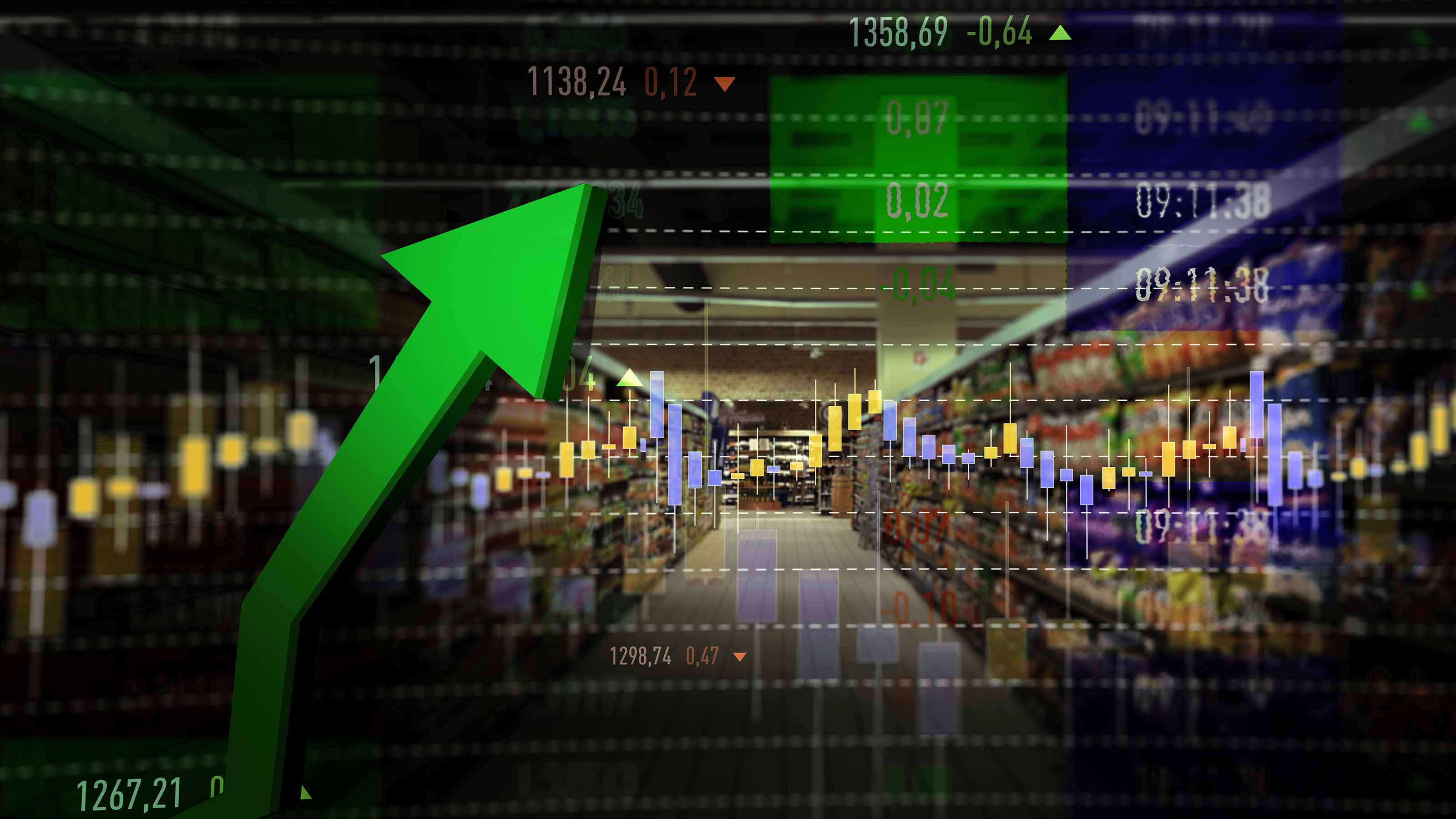
The April Consumer Price Index (CPI) showed that inflation moderated last month, but a data-dependent Federal Reserve will likely need to see more dovish developments before it enacts its first interest rate cut, experts say.
Headline inflation rose 0.3% in April vs 0.4% the previous month, the Bureau of Labor Statistics said Wednesday, matching economists' forecast. On an annual basis, headline inflation increased 3.4%. That was lower than March's print of 3.5%.
Core CPI, which strips out volatile food and energy costs and is considered a better predictor of future prices, rose 0.3% month-to-month. That was slower than the 0.4% increase seen the previous two months, and also matched forecasts. On an annual basis, core CPI rose 3.6%, or the lowest level in three years, vs the 3.8% rate seen in the prior two months.
"The smallest increase in the [monthly] core CPI since December will reassure the Fed that monetary policy is tight enough to bring inflation eventually back to the 2% target, though the run rate still needs to slow further to trigger rate cuts, unless payrolls tank first," wrote Ian Shepherdson, chairman and chief economist at Pantheon Macroeconomics.
Fed Chair Jerome Powell and the Federal Open Market Committee (FOMC) are looking for sustained evidence that inflation is down to its 2% target before they move to cut the federal funds rate from a 23-year high. The latest CPI report adds a dovish data point to the Fed's deliberations on interest rates, experts say.
As of May 15, futures traders assigned a 53% probability to the first quarter-point cut coming in September, up from 46% a month ago, according to CME Group's FedWatch Tool.
With the April CPI report now a matter of record, we turned to economists, strategists and other experts for their thoughts on what the data means for markets, macroeconomics and monetary policy going forward. Please see a selection of their commentary, sometimes edited for brevity or clarity, below.
Expert takes on the CPI report

"The April CPI report reveals an encouraging signal that consumer inflation pressures may be moderating a bit more visibly across a broader cross-section of categories. If sustained, it could keep Fed rate-cut expectations for September and December alive and well. Clearly, restrictive monetary policy has more work to do, and the Fed will remain patient and watchful. However, today's softer CPI and retail sales reports do measurably reduce the already low probability of additional rate hikes from the Fed." – Scott Anderson, chief U.S. economist at BMO Capital Markets
"The April CPI and PPI data now bode well for the Fed's preferred PCE inflation metric, which will likely come in softer than what we saw in the first quarter. It does keep the Fed in a holding pattern, with no rate cuts until September at the earliest and a rate hike looking even less likely." – Sonu Varghese, global macro strategist at Carson Group
"Confidence restored. Today's CPI report marked a modest deceleration from the prior month and should restore the Fed's confidence that a continued pause in the near-term is appropriate and rate cuts later this year may be necessary. One month does not a trend make, but the trend of moderating inflation and slowing in consumer spending is favorable for risk assets. All eyes will shift next to the labor market, which will likely set the course for the Fed in the weeks ahead. What will really get the Fed’s attention was the slowdown in retail sales, which were weaker than expected." – George Mateyo, chief investment officer at Key Wealth
"The smallest increase in the core CPI since December will reassure the Fed that monetary policy is tight enough to bring inflation eventually back to the 2% target, though the run rate still needs to slow further to trigger rate cuts, unless payrolls tank first. The slowdown in April was encouragingly broad-based. Looking ahead, the case for expecting a further slowdown in core CPI inflation remains compelling. The foundations, therefore, are in place for a further deceleration in the core CPI this summer, enabling the Fed to start easing in September. But if payrolls roll over as fast as the NFIB survey implies, don't rule out July." – Ian Shepherdson, chairman and chief economist at Pantheon Macroeconomics
"Nice to see underlying inflation data cool in April after three months to start the year of troubling prints. Fears of entrenched inflation should be eased with signs of weaker retail sales internals (with downward revisions) which have been one of the main catalysts of above target inflation (i.e., the rock solid consumer) in addition to lagged housing data. On net, today provided a round of dovish data vs expectations, which has rates rallying and stocks approaching all-time highs. We'd caution that it is just one print (that is still notably above target) coming off the back of three hot prints to start the year." – John Luke Tyner, portfolio manager at Aptus Capital Advisors
"Today's CPI number met expectations with no major surprises. However, it remains inconsistent with the Fed's 2% target. This should put the Fed at one to two cuts by the end of this year and will likely remove any thought of another hike. The market's response has more to do with the disappointing retail sales number, potentially signaling an uphill battle for second quarter GDP growth. As more data comes out that points to slower top line growth and slower labor demand, investors should be looking at the Fed's probable rate cut trajectory and considering pushing out duration. Once the Fed cuts, yields on cash could quickly disappear." – Mike Sanders, head of fixed income at Madison Investments
"The Fed is looking for a long-term shift, not a short-term signal, so one positive CPI print is unlikely to move the needle very far on monetary policy, but it's a start after so many upside surprises earlier this year. However, cracks are emerging in consumer spending and labor market activity, suggesting its higher for longer regime might not be economically healthy for much longer. This means the Fed might have to settle for another three or four soft prints to indicate the beginning of a final descent before loosening rates and relieving pressure on the economy." – Noah Yosif, chief economist at the American Staffing Association
"The market has reacted positively to in-line numbers given relief that numbers did not surprise to the upside as had been the case with several of the more recent reports. Key though is that this is one data point, and I think policymakers are focused on recent trends in inflation as it relates to policy direction. As such, the probability of a June rate but hasn't budged at all since the beginning of the week and currently stands at less than 5% chance. The next important points for inflation will come with the next PCE report at the end of this month to confirm this CPI report as inflation has stopped surprising to the upside. Policymakers will likely want to see several reports on both the PCE and CPI that are trending flat to down in order to shift their stance and be more open to the possibility of a rate cut. Right now the most likely time period for a rate cut based on market expectations is in September." – Steve Kolano, chief investment officer at Integrated Partners
"Shelter didn't ease as hoped, but there was improvement in transportation and healthcare. The number wasn't perfect, but we're staggering toward lower inflation. Weaker data on retail sales and the Empire Index also suggest growth is slowing, which keeps rate cuts on the table. It was a trifecta of dovish news." – David Russell, global head of market strategy at TradeStation
"This week's inflation data keeps hopes of an initial cut to the Fed's main policy rate in July alive, but a July cut would require these small, but positive, steps back in the direction of inflation moderation to be quickly supported by a combination of more meaningful positive inflation news and/or more concrete signs of labor market weakness over the next 10 weeks. When combining the appropriate components from this week's PPI and CPI reports, the read through for this month's core PCE inflation readings supports a drop back to a 0.2% print. The market is now pricing in two cuts for 2024; as an average for the range of potential outcomes, two cuts in 2024 is quite reasonable. However, we believe that not enough cuts are priced for 2025 and 2026." – Greg Wilensky, head of U.S. fixed income at Janus Henderson Investors
"The move higher in stocks and lower in yields for bonds is not so much because this report will quicken the pace of rate cuts. We still expect September to be the first rate move, but because it did not continue a string of hotter than expected readings. While year-over-year readings continue their descent, shorter term readings are still at levels which preclude the Fed from easing in the short term." – Steve Wyett, chief investment strategist at BOK Financial
"Today's core CPI came as a welcome sign for the markets. You've got to go back to February to find the last CPI inflation report that didn't surprise to the upside. Falling oil prices in April helped take some pressure off the headline number, but core prices, particularly services, remain elevated. Still, fears of inflation re-accelerating seem to be tempered for now, as average hourly earnings showed some moderation from March. While today's report does little to guarantee any rate cuts in the second half of this year, it keeps them on the table. With core inflation now the lowest in three years, today’s report allows the Fed to be patient with policy." – Ivan Gruhl, co-chief investment officer at Avantax
"Today's highly anticipated report should be well received by equities. While inflation remains modestly above the Fed's target, a couple more months similar to today's report could allow the Fed to begin cutting rates later this year. More importantly, the report signals some welcome relief for consumers in areas that have been pain points for many families. Food overall was flat for the month, with food at home (e.g., groceries) down 0.2%, and both new and used car prices declined for the month. Slowing inflation should help improve the general economic outlook of many Americans." – David Royal, chief financial and investment officer at Thrivent
"Overall, PPI and now CPI are showing a mixed result in the Fed's inflation flight, giving us a clear picture of what PCE will be later this month – progress being made, but more required. It will take some time for the Fed to feel confident in lowering rates, and what's their incentive to do so now? The U.S. has a tight labor market, strong credit conditions and a strong consumer. The Fed will likely continue to adjust its policy on QT in the background to ensure credit and liquidity conditions remain stable, along with longer term interest rates. The U.S. economy remains strong and resilient, and lower rates coming in Europe should continue to drive demand for U.S. goods and services, further supporting the U.S. economy." – Jason Barsema, president and co-founder of Halo Investing
"The Federal Reserve has been clear in its intent to lower policy rates and is looking for any softening in the inflation data as an excuse to follow through on its dovish bias. Today's CPI release will provide the Fed and bond investors some temporary comfort after the reacceleration in Q1, but inflation is still trending well above the central bank's goal of near 2%. A decisive further deceleration will be required before the Federal Reserve can cut rates. However, our view is that core CPI inflation will remain sticky and hold well above 3% this year, significantly limiting the window for rate cuts. The pandemic-related distortions have already unwound, rent inflation will ease but less than appreciated, and services inflation will remain rapid because the U.S. economy continues to expand above its long-run trend at a point when there is no slack to create disinflationary pressures ahead." – Phillip Colmar, global strategist at MRB Partners
"Inflation numbers were exactly what a lot of market participants were hoping to see after two months of reacceleration. Core goods appear to be the driving force this month with large declines in mainly discretionary spending areas like used vehicles, furniture, sporting goods, pet products and other general recreational goods. This makes sense when taken in combination with the retail sales numbers that were released this morning as well, which came in very weak vs March's figure. It's starting to feel more and more that the consumer may be tiring and pulling back on non essential spending. Services still appear a bit sticky, particularly shelter rents continue to be a headwind, but the moderating price pressures should re-ignite talk about rate cuts at the upcoming Fed meetings." – Clayton Allison, portfolio manager at Prime Capital Investment Advisors







